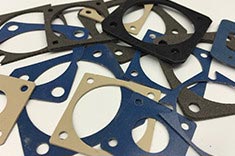EMI Shielding Products
- Custom Gasket Fabrication
- Connector Gaskets
- Bonded O Ring
- Custom Gaskets
- Conduct-O-Knit Knitted Wire Mesh
- Conduct-O-Seal Combo Gasket
- Conduct-O-Elastomer
- Conduct-O-Seal Oriented Wire in Silicone Gasket Material
- Conduct-O-Mesh Tape
- Conduct-O-Foam
- Conduct-O-Bond
- Optical Filters For Electronic Displays
- Shielded Vent Panels
- ESC Board Level Shielding
- 300 Series
Using EMI Shielding to Reduce Unwanted Noise
As the flow of electrical currents change, electromagnetic radiation (EMI) is produced. The proper functioning of electronic devices is hampered when EMI enters somewhere it should not be. Modern electrical designs need to manage and prevent EMI leakage to ensure proper functionality. It is important to design and test noise issues early in the design process because late-stage fixes are costly and time-consuming. Below, we want to provide a brief guideline for understanding electromagnetic interference. RFI shielding and EMI shielding are the best tools to use to combat unwanted noise.
 Compatibility and Interference
Compatibility and Interference
Within a power-system design, noise is viewed as electrical currents; therefore, noise is often referred to as RFI (Radio Frequency Interference). Many electronic devices have their performance negatively affected by unwanted currents. When not adequately protected, noise currents are considered free-flowing, and so when they exit the supply, they are conducted emissions.
It is important to recognize that all electrical devices can create internal electrical noise—the problem occurs when devices are switched on and off. A passive device (like rectifiers) generates noise. An active device switches faster than a passive device, and they also generate frequencies that reach up to 30 MHz (this is the highest frequency allowed by commercial standards).
EMI RFI Shielding
Besides EMI shielding, grounding helps to reduce the impact of external noise significantly. It creates a low-impedance pathway that grounds electromagnetic interference currents.
Related Reading- Preventing Interference with RFI Shields and RFI FiltersRFI shielding is the standard when it comes to suppressing the emission of RF shielding. Good electrical engineers incorporate shielding into their design as soon as possible.
- What is the Difference Between EMI and RFI
- What are the Differences Between EMI Shields and EMI Filters



